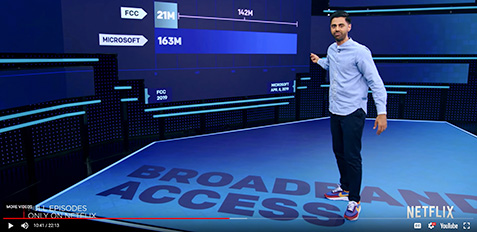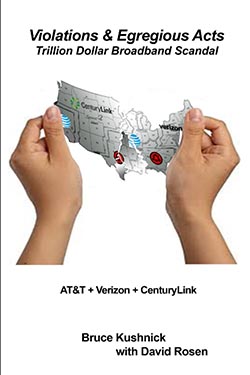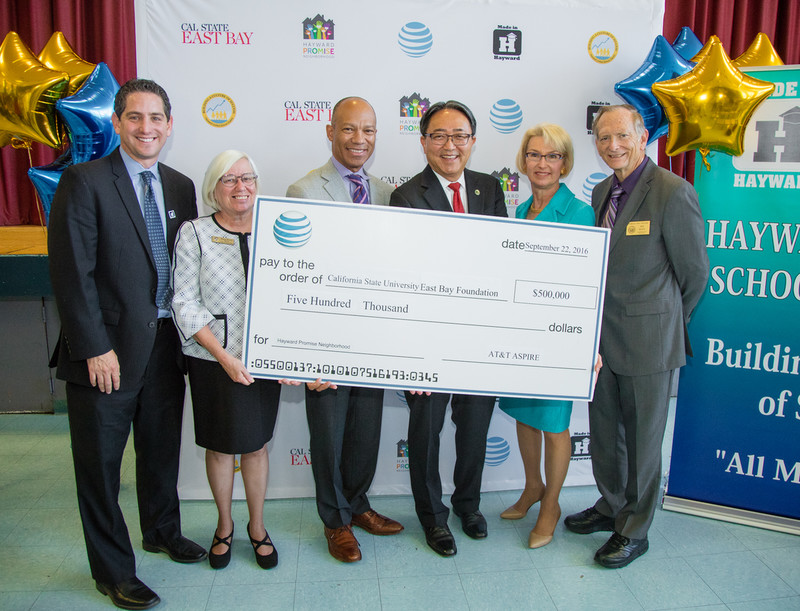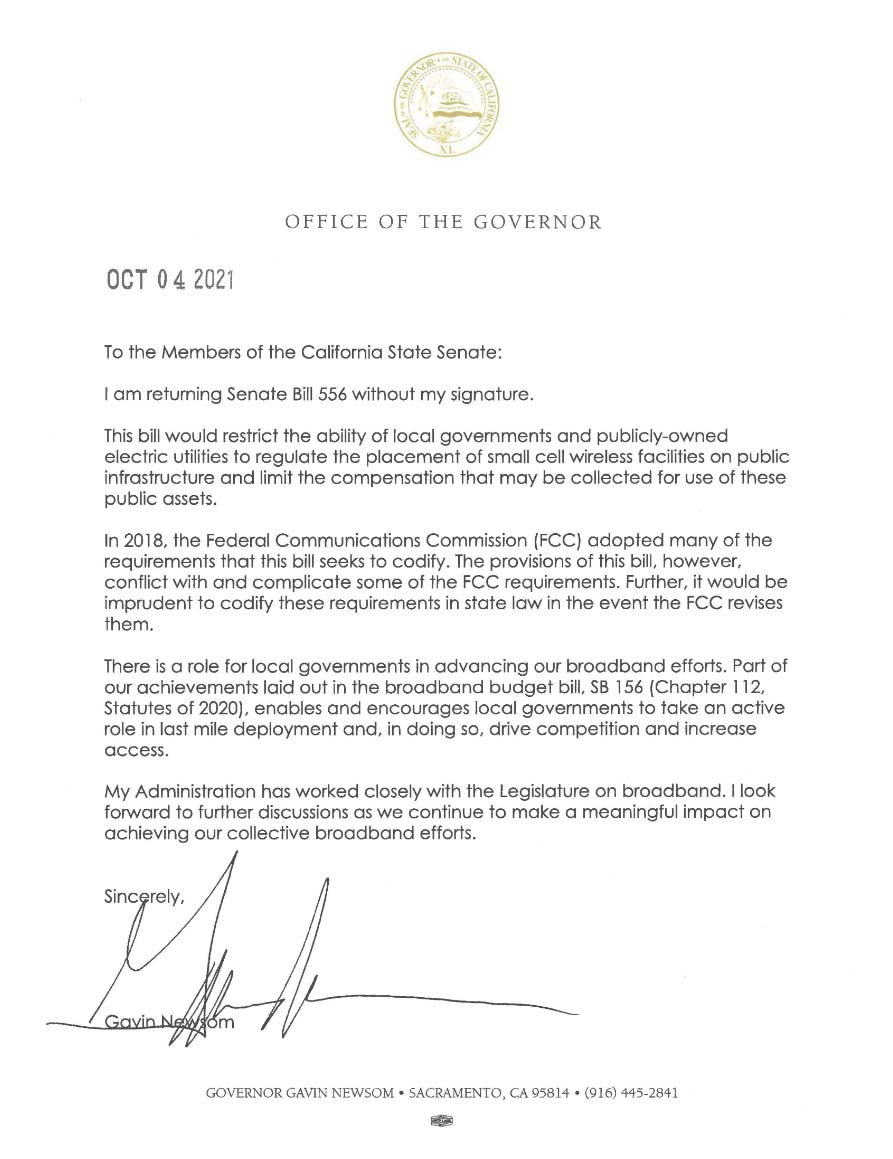Governor Newsom . . .
Please Veto AB-965
Assemblymember Juan Carrillo’s AB-965 aims to override significant local control re: wireless infrastructure.
AB-965 would allow Wireless Telecommunications Facility (WTF) applicants to BATCH 25, 50 OR MORE applications at the same time AND it would establish an unnecessary DEEMED-APPROVED ratchet, which is CONTRARY to Federal Telecom law!
To fix AB-965, the author can revert back to the original bill text from Feb 14, 2023, returning the bill to its micro-trenching, fiber optic roots; and then add the following additional provisions to address the Digital Divide in an effective way:

and the Simple Solution: Title II Regulation
- Grant last-mile wired-broadband providers universal access to fiber-optic lines that were installed using Californians’ ratepayer funds or that are installed in the public rights-of-way. Since 1994, the CA Public Utilities Commission (CPUC) has allowed telecom incumbents to add fees to telephone bills for the express purpose of replacing legacy copper lines with fiber-optic lines. Californians have been forced to pay those fees under the promise of receiving public fiber-optic lines. This is a prepaid utility contract that cannot lawfully be broken.
- Direct the CPUC to set and enforce reasonable, regulated prices for last-mile wired broadband providers to universally access fiber optics that were installed using Californians’ ratepayer funds, or installed in the public rights-of-way. The CPUC has the authority to set and regulate fiber optics access prices because such broadband is wired telecommunications on ratepayer-financed lines, which can be regulated by the State, per the Oct 2019 DC Cir. ruling in Mozilla Corp. v. Fed. Commc’ns Comm’n, 940 F.3d 1 (D.C. Cir. 2019).
- Make any permit batch requirements apply only to unserved communities (i.e. areas that have no provider able to offer 25 Mbps down and 3 Mbps upload speeds).
- Restrict any state and federal funds for addressing the Digital Divide to be used only in areas of that have no provider able to offer 100 Mbps down and 20 Mbps upload speeds, as confirmed via Microsoft Corp.’s records of data transfer speeds from homes/businesses via Windows 8/10/11 computers connected to the Internet. Click the photo or links to the right to view important videos.
- Support local control over Wireless Telecommunications Facilities (WTFs), consistent with the legislative intent of the 1996 Telecommunications Act, by repealing CA state bills AB-57 (from 2015) and AB-537 (from 2021), so as to remove any deemed-approved ratchets from CA Code, correcting Assemblymember (Asm.) Quirk’s past errors and aligning CA state code with the 1996-TCA and FCC Orders, which have NO deemed approved ratchets.
Treat the Cause — NOT Just the Symptoms — of the Digital Divide.
Hold Telecom Incumbents Accountable for Their Past Actions — Actions Which Created and Prolonged the Digital Divide.
The real cause of the Digital Divide: Telecom incumbents have bamboozled State Legislators and CPUC Directors for decades. Our state officials have lacked the backbone to stand up to these incumbents and hold them accountable.
Assemblymember Carrillo can significantly amend AB-965 to provide first-rate broadband service to Californians: wired broadband via Fiber Optics to the premises that offers symmetric service of no less than 100 Mbps down and 100 Mpbs up. Californians previously paid $16 billion+ on their CA landline phone bills to replace their copper phone lines with fiber-optic cables to the home; but AT&T, Verizon and other telecommunications companies never carried through on their contracts to complete the work in most areas – producing the Digital Divide, by design.
AB-965 also needs amendments that:
-
- acknowledge the legislative purposes of the federal 1996 Telecommunications Act, which Amended the 1934 Communications Act, is “to make available . . . a rapid, efficient, Nation-wide . . . wire and radio . . . service with adequate facilities at reasonable charges . . . for the purpose of promoting safety of life and property;”
- define minimum upload and download speeds for adequate wired broadband service (i.e. information service) and the minimum RF signal strength (measured as RSSI in dBm) in outdoor areas for wireless telecommunication service, consistent with Title 47 U.S. Code § 324, Use of Minimum Power; and
- preserve expressly for localities their federally-established authority to determine their preference for how best to deliver broadband to their residents; and

Link to: One page summary of Bruce Kushnick’s 2022 book
Evidence to Consider: 30+ year telecom analyst Bruce Kushnick, has written multiple books about the Telecom industry’s duplicity, fraud and incessant bait-and-switch tactics. See Kushnick’s latest article on Medium: Verizon’s FiOS Home Internet Is Now a Deceptive Fixed Wireless Bait and Switch.
Kushnick’s latest book from 2022 is entitled The Book of Violations & Egregious Acts: Trillion Dollar Broadband Scandal. WireCalifornia has placed this book and the evidence it references in the legislative record for AB-965.
This evidence has been clear, convincing and placed in the CA Legislative record starting in 2015 with our first opposition testimony to Asm. Quirk’s Bill, AB-57 and also in our opposition testimony to Asm. Quirk’s Bill, AB-537 in 2021 — both of these bills deserve to be repealed in 2023. Listen to the audio file and view the videos, below.
July 8, 2021 at Senate Governance and Finance Committee: listen to then Assemblymember Bill Quirk’s answer to the $64 Billion Question from Sen. Durazo —
Sen. Durazo: “If the parameters for the [WTF] shot clocks have been set [by the FCC], why pursue [state] legislation on the same issue?”
Asm. Quirk: “Well, this all started in 2015, when I was sitting in a meeting, actually a webinar, done by the League of [California] Cities. And they were talking about what [cities] would have to do with the recent [WTF] shot clocks set by [the FCC]. And what the person who did the briefing said was:”
‘Yeah, this is a shot clock, but don’t worry about it. [The wireless applicants] would have to sue [the cities] to enforce it and they are never going to sue [for that]. So, it’s not something to worry about.’
Asm. Quirk: “It was at that point that I decided we should have a remedy and it was my idea that it would be deemed approved. That was me. And it went on from there and it did become [state] law.”
Really? Deemed approved came from you, Asm. Quirk? As Asm. Quirk’s back was to the video camera and he was wearing a blue hospital mask, no one could see the many inches that his nose likely grew as he uttered these statements. The language of AB-57 and AB-537 both closely match the model state legislative bills written by wireless industry lobbying group, the American Legislative Exchange Council (ALEC) that were introduced simultaneously in many state legislatures across the U.S. in 2015 and 2021. A much more plausible explanation for why Asm. Quirk introduced these two unnecessary and damaging state bills (AB-57 and AB-537) is shown in the photo, below, taken shortly after AB-57 was signed into law. Time to hit the delete button on AB-57 and AB-537.
This is a $500,000 Check to Benefit Asm. Quirk’s Assembly District . . .

|
July 15, 2015 — Expert Testimony Opposing AB.57 at CA Senate Governance & Finance Committee |
July 8, 2021 — Expert Testimony Opposing AB.537 at CA Senate Governance & Finance Committee |
|---|---|
Wired Broadband and Wireless Broadband are NOT Functionally Equivalent services, per Federal law.
- Telecommunications service = personal wireless service = ability to place outdoor wireless phone calls — qualifies for limited federal preemption
- Information service = broadband = Internet, audio/video streaming, online gaming, mobile apps — qualifies for NO federal preemption
- . . . which means any local agency can establish a preference in its local code for wired broadband infrastructure over wireless broadband infrastructure because the federal “effective prohibition” test only applies to wireless telecommunications service and NOT to wireless information service.
Legislative Intent of the 1996 Telecommunications Act is stated in the 1996-TCA Conference Agreement, as ruled by the US Supreme Court in 2005
The conference agreement creates a new section 704 which prevents Commission preemption of local and State land use decisions and preserves the authority of State and local governments over zoning and land use matters except in the limited circumstances set forth in the conference agreement. The conference agreement also provides a mechanism for judicial relief from zoning decisions that fail to comply with the provisions of this section.
It is the intent of the conferees that other than under section 332(c)(7)(B)(iv) of the Communications Act of 1934 as amended by this Act and section 704 of the Telecommunications Act of 1996 the courts shall have exclusive jurisdiction over all other disputes arising under this section. Any pending Commission rulemaking concerning the preemption of local zoning authority over the placement, construction or modification of CMS facilities should be terminated.
When utilizing the term “functionally equivalent services” the conferees are referring only to personal wireless services as defined in this section that directly compete against one another. The intent of the conferees is to ensure that a State or local government does not in making a decision regarding the placement, construction and modification of facilities of personal wireless services described in this section unreasonably favor one competitor over another. The conferees also intend that the phrase “unreasonably discriminate among providers of functionally equivalent services” will provide localities with the flexibility to treat facilities that create different visual, aesthetic, or safety concerns differently to the extent permitted under generally applicable zoning requirements even if those facilities provide functionally equivalent services. For example, the conferees do not intend that if a State or local government grants a permit in a commercial district, it must also grant a permit for a competitor’s 50-foot tower in a residential district.
Actions taken by State or local governments shall not prohibit or have the effect of prohibiting the placement, construction or modification of personal wireless services. It is the intent of this section that bans or policies that have the effect of banning personal wireless services or facilities not be allowed and that decisions be made on a case-by-case basis.
Under subsection (c)(7)(B)(ii), decisions are to be rendered in a reasonable period of time, taking into account the nature and scope of each request. If a request for placement of a personal wireless service facility involves a zoning variance or a public hearing or comment process, the time period for rendering a decision will be the usual period under such circumstances. It is not the intent of this provision to give preferential treatment to the personal wireless service industry in the processing of requests, or to subject their requests to any but the generally applicable time frames for zoning decision.
The phrase “substantial evidence contained in a written record” is the traditional standard used for judicial review of agency actions.
1996 Telecommunications Act, Key Definitions (source)
Title 47 § 332 (C) Definitions.
(i) the term ‘personal wireless services’ means commercial mobile services, unlicensed wireless services, and common carrier wireless exchange access services;
(ii) the term ‘personal wireless service facilities’ means facilities for the provision of personal wireless services; and
(iii) the term ‘unlicensed wireless service’ means the offering of telecommunications services using duly authorized devices which do not require individual licenses, but does not mean the provision of direct-to-home satellite services (as defined in section 303(v)).
Title 47 U.S. Code § 153 Definitions.
(50) The term ‘telecommunications’ means the transmission, between or among points specified by the user, of information of the user’s choosing, without change in the form or content of the information as sent and received.
(53) The term ‘telecommunications service’ means the offering of telecommunications for a fee directly to the public, or to such classes of users as to be effectively available directly to the public, regardless of the facilities used.’’
(24) The term ‘information service’ means the offering of a capability for generating, acquiring, storing, transforming, processing, retrieving, utilizing, or making available information via telecommunications, and includes electronic publishing, but does not include any use of any such capability for the management, control, or operation of a telecommunications system or the management of a telecommunications service.
All of the above is consistent with Gov. Newsom’s 2021 $6 Billion Middle-Mile/Last-Mile Broadband Initiative in SB-156
On Oct 4, 2021, Governor Newsom Vetoed SB.556!
View our Sept 18, 2021 pitch to Gov. Newsom via Zoom .

